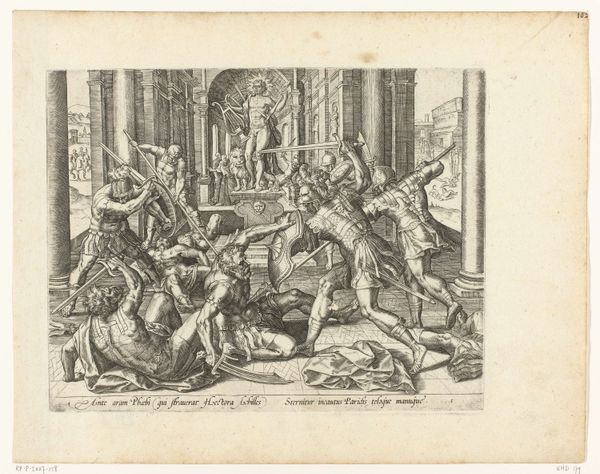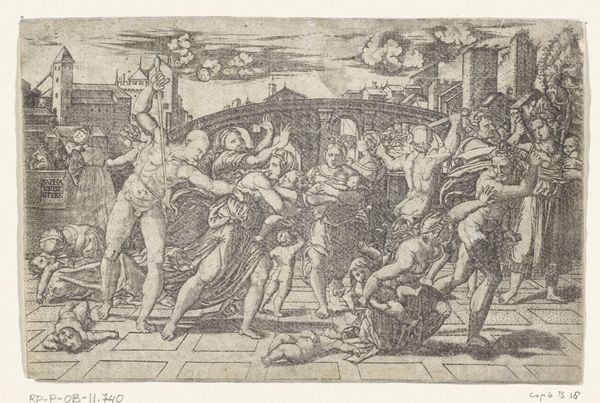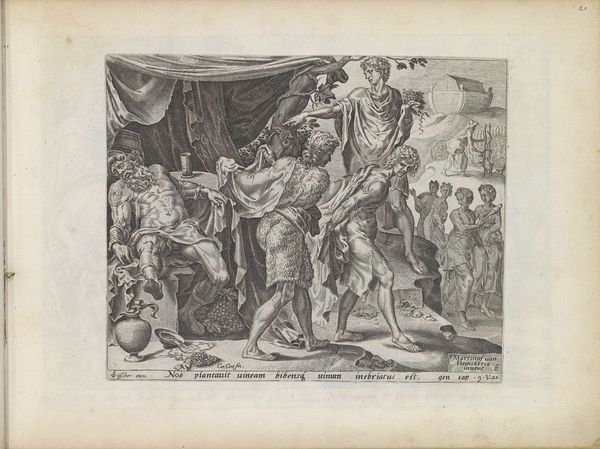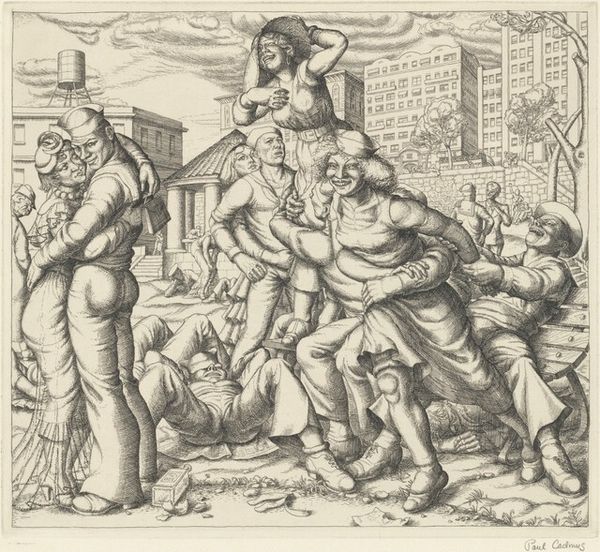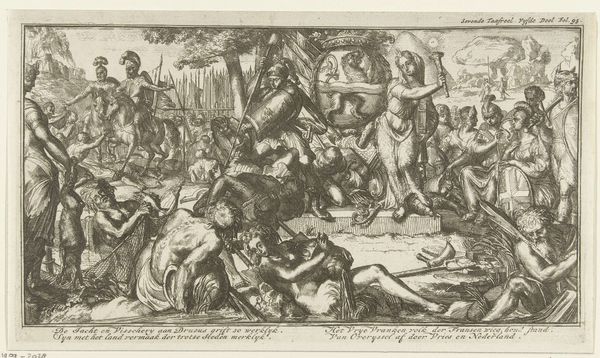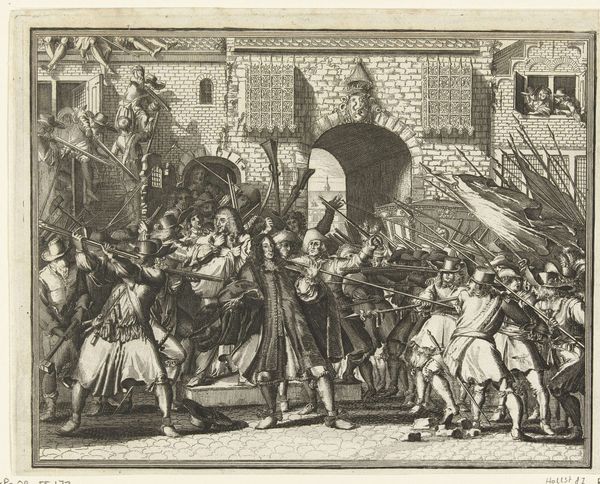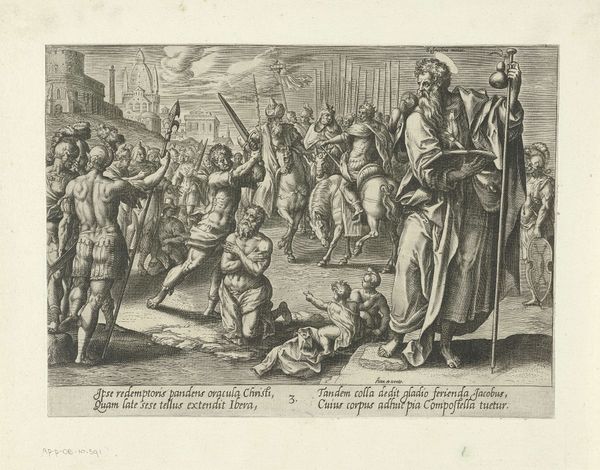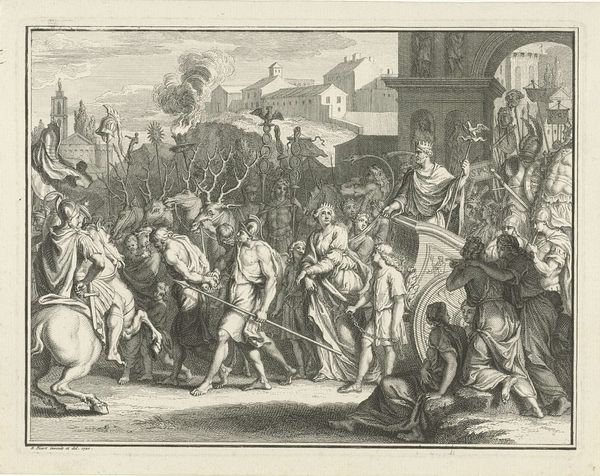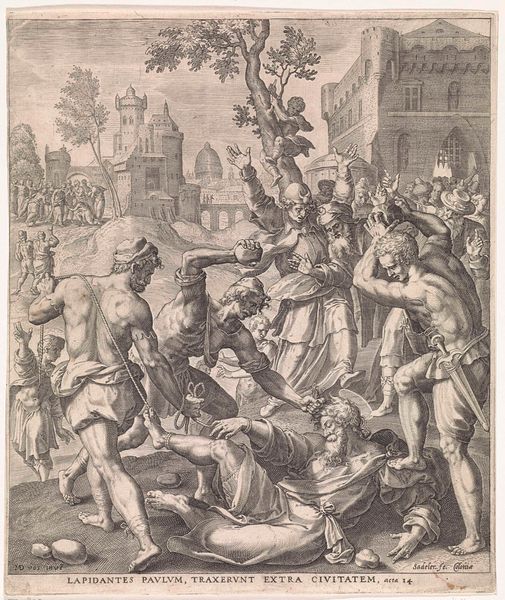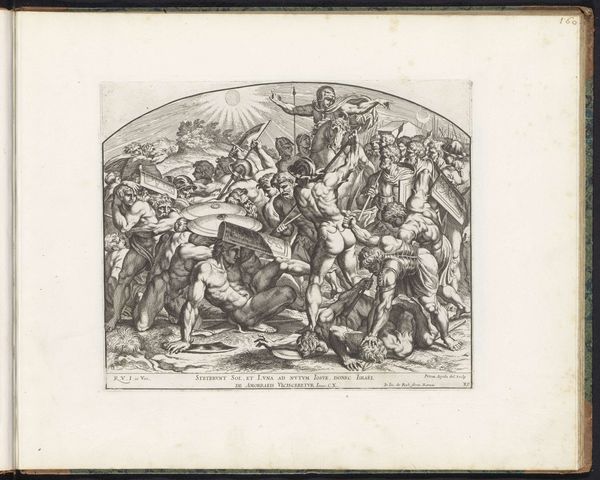
engraving
#
baroque
#
figuration
#
line
#
history-painting
#
engraving
Dimensions: height 235 mm, width 335 mm
Copyright: Rijks Museum: Open Domain
Curator: This is an engraving entitled *The Martyrdom of Saint Martina at the Stake* by Antonio Gherardi, likely created between 1654 and 1702. Editor: Immediately, I’m struck by the sheer number of figures packed into the frame, all rendered with incredibly fine lines. There's a dynamic tension created by the contrasts in posture and emotion, like looking at the layers in a raw textile. Curator: Precisely. Gherardi masterfully uses line to construct this dense narrative. We see the baroque fascination with drama and movement. Note how the lines contribute to an overall feeling of controlled chaos. Compositionally, observe the strategically placed columns framing the unfolding execution of Saint Martina, almost forcing us to participate in the drama. Editor: I keep thinking about the copper plate itself. How many hours did it take to meticulously incise these lines to render this image? Also, what sort of acid bath and papers where involved in the multiple states of printing it until he felt that he had reproduced correctly what he had on mind? Thinking about the physical labour brings this supposed elevated act back to its corporeal production. Curator: It’s an interesting point. You focus on the means of production and materiality, highlighting the labor intensive craft, rather than the spiritual content. But Gherardi employs specific visual codes related to heroism and martyrdom—note Martina’s calm face amidst the turbulence—a classical rhetorical device in representing saints being tortured. The lines in her garments suggest some sort of classical figure while she remains serene in her piety, creating the allegorical figure. Editor: The contrast, even in the line weight alone, really brings out her isolation within the crowd, this supposed act of piety. What a material performance! Her act solidifies in front of our very eyes—ink, acid, a martyr, printed! Curator: Well, looking at the architecture— the meticulous detailing of each building or arch—we appreciate Gherardi’s command of perspective and line as tools of ideal representation and religious devotion. Editor: Yes, and I keep being mesmerized by all these thousands of small traces that have been produced and distributed to a faithful public for decades. Thinking about Gherardi’s own investment of physical labor on it just opens this can of questions... Curator: An utterly remarkable convergence between craft and devotional representation, isn't it? Editor: Indeed, between materials and sacrifice.
Comments
No comments
Be the first to comment and join the conversation on the ultimate creative platform.

